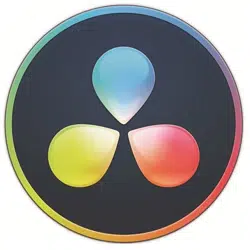Loading ...
Loading ...
Loading ...

187
Music Editing
Music editing involves placing different music elements into the soundtrack to enhance the
mood or story. All soundtrack music falls into one of two categories: music occurring within
the scene that the characters can hear, so-called source or diegetic music; and non-diegetic
music that is added in post for the benefit of the audience, the background score.
Diegetic music needs special attention to make sure that the volume levels, placement,
effects and presence fit the context of the scene.
Non-diegetic music added in post production for emotional effect or impact includes the
score, stingers, and stabs. Stingers are singular notes or chords that build tension and
suspense. Stabs are quick bursts of music that work like an exclamation point to draw
attention to something or someone in the story or narration.
Enhancing and Sweetening Tracks
Once the dialogue tracks are edited and the sound effects and music added, it’s time make
subtle improvements to the sound of each track so that they work in context with the other
tracks in the mix. The tools used to improve the sound in a track are similar in many ways to
the tools colorists use to improve individual shots within a scene. Because you are learning
to use DaVinci Resolve, and color correction is an integral part of the post production
process, it seems fitting to show the similarities between adjusting audio and color.
For all intents and purposes this process could be called audio correction. You manipulate
four fundamental elements to enhance or “sweeten” audio tracks so they work together as
intended in the final mix: volume level, dynamics, equalization and pan. DaVinci Resolve
controls all four of these elements on every track without the need for additional plug-ins
or patching.
Volume controls are used to adjust the loudness of a track on a decibel scale, and are
similar to luminance (brightness) because both volume and luminance have strict broadcast
standards, and are usually the first thing the audience notices in each scene. Volume levels
can be adjusted on each clip, track, and the main output, just as luminance (black and white
levels) can be adjusted on individual clips, scenes, and output. In DaVinci Resolve, you can
change the volume level of a clip in the timeline or Inspector. Track volume is controlled by
faders in the mixer. You can also change the volume levels over time using automation.
Dynamics controls adjust the dynamic range, which is difference between the loudest
andquietest peaks in a track. A track’s dynamic range is very similar to contrast within a shot.
Atrack with a high dynamic range has very loud and quiet elements within the track, such as
a character whispering and then screaming in the same scene. A low dynamic range would
be fairly flat, such as a commercial voiceover in which the volume level of the talent is very
even from start to finish. If you have ever worked with a Waveform or Parade scope in the
Color page, controlling a track’s dynamics is very similar to adjusting the white and black
levels of a clip. Just think of white as the loudest you can get (-3db) and black as the quietest.
Loading ...
Loading ...
Loading ...
